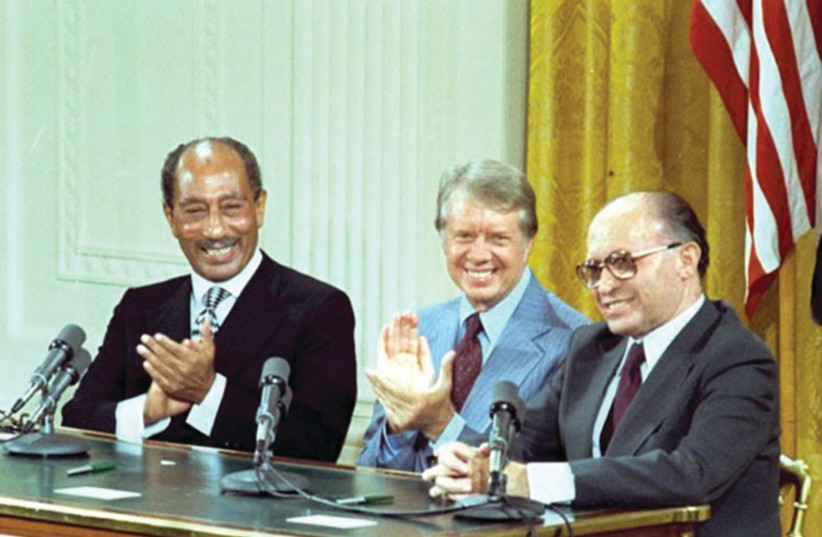It has been nearly 50 years since US President Richard Nixon launched his historic diplomacy campaign across the Middle East. Nowadays, it is commonplace for presidents to do regional tours and meet with leaders, but at the time, Nixon was the first sitting president to make such overtures in the Middle East. This tour was not without a dramatic backdrop: The Yom Kippur War had recently ended, and tensions were high. By examining this moment, we can implement critical lessons in the conflicts faced by the United States and Israel.
In 1973, it was not a given that the US would aid Israel against the coalition led by Egypt and Syria. Key advisers to Nixon were split on how to react to Prime Minister Golda Meir’s messages. The president’s men feared that assistance to Israel would result in the throttling of oil markets by the Organization of Petroleum Exporting Countries (OPEC) and argued for restraint until Israel’s borders (not territory won in 1967, such as the Sinai) were threatened.
Nixon ultimately decided that he had to step in to counter the coalition that the USSR was supplying. The president viewed Israel as not only a vital ally but also a check on USSR influence in the neighborhood. Launching Operation Nickel Grass, Nixon ordered to “send everything that can fly” along with tanks, arms, ammunition, and equipment. Many view this operation as the turning point in the war, allowing Israel to repel Egypt and Syria and setting the groundwork for agreements of disengagement.
The White House correctly predicted retaliation from OPEC, but Nixon held firm. Oil prices jumped, and shortages ensued over the coming months. America weathered the storm by standing with Israel and came out stronger on the other side. By showing that the USSR could not use its resources to gain leverage, the US strengthened its standing while also promoting Israel’s security. Nixon then parlayed this new positioning to generate lasting progress through his Middle East tour. Through this hard work, Nixon deserves real credit for the eventual Camp David Accords and the 1979 Peace Treaty between Israel and Egypt establishing relations between them.


Today, we can learn a great deal from Nixon’s actions in the Middle East. By unapologetically supporting the US-Israel relationship and making clear it would survive the consequences, enemies stood down. Both nations have the ability to exhibit power on the world stage and should not be apologetic about their might. This strategy should be utilized against the new force propping up adversaries in the region, Iran.
Death to America and Israel
Tehran’s involvement with proxy groups such as Hamas and Hezbollah and puppet governments in Iraq is a much more direct approach than the USSR’s shipment of arms to Egypt and Syria. By projecting force and dismantling Hamas and Hezbollah, both Israeli and US safety are bolstered. Making clear to those who chant “death to America and Israel” that their threats are nothing more than empty words is how we maintain a sphere of strategic interest.
Inroads with other nations in the region is an objective of significant importance, but we must revert to the strategy that president Nixon understood. Peace will come when enemies grasp that they cannot defeat us. Standing with allies in the face of these crises will produce lockstep partnerships and ensure the standing of both states.
It is easy to let others fight their battles, but conflict does not exist in a vacuum; being neutral allows belligerent parties to choose when you are next. I recommend world leaders who back away from this moment to travel to Yorba Linda, California – home of the Richard Nixon Presidential Library and Museum – to learn how Nixon rose to the occasion in 1973 and beyond.
The writer was granted the American Israel Public Affairs Committee Activist of the Year Award in 2019 and 2020. He is an Arizona State University-Watts College of Public Service master of public policy graduate.
